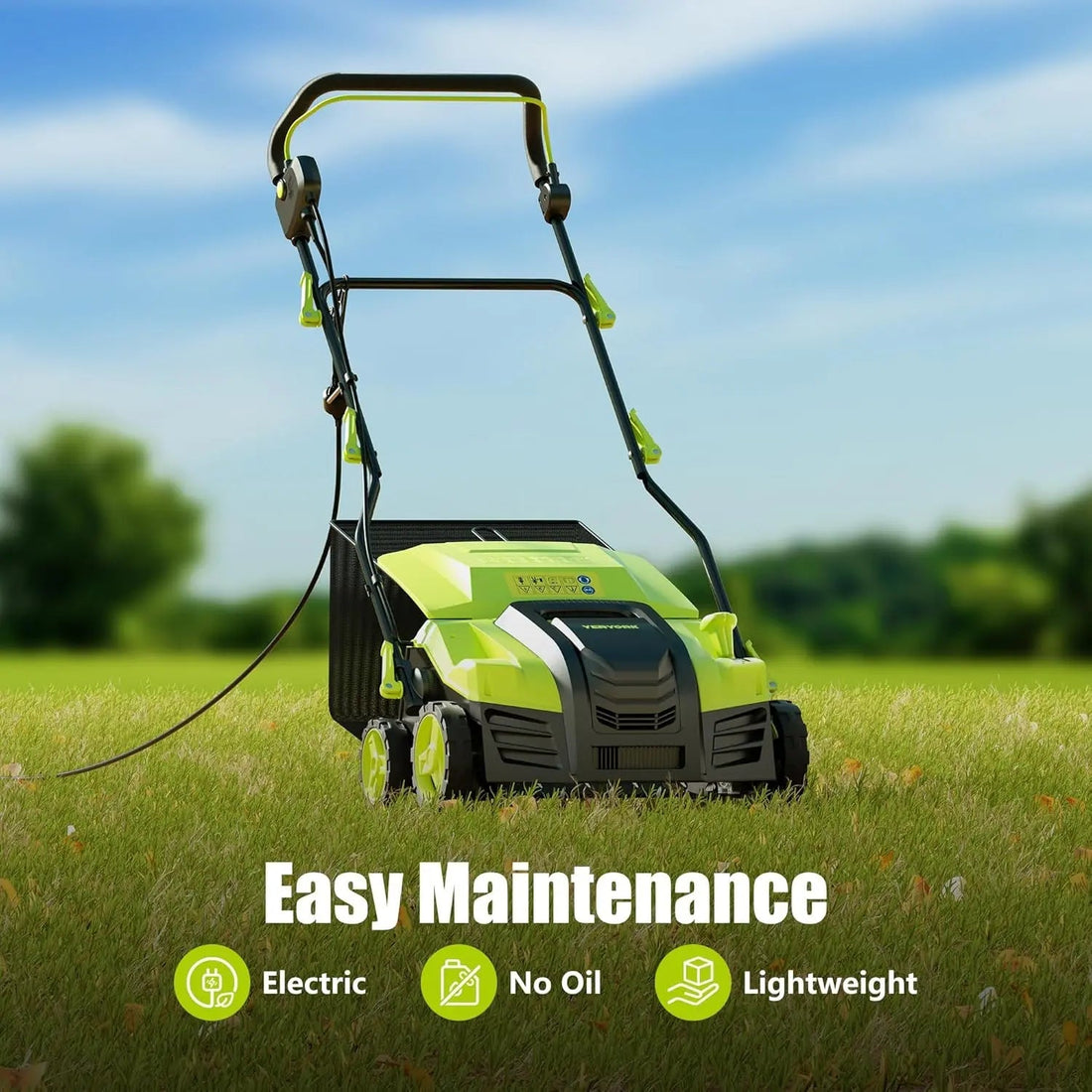How to Thatch a Lawn Quickly and Effectively with an Electric Dethatcher
This in-depth guide explains what thatch is, when to remove it, and how to use an electric dethatcher like the YERYORK 16″ 15-AMP model to revitalize your turf fast. Whether you're dealing with compacted grass or spongy soil, follow these professional steps to restore airflow, water penetration, and root health for a greener, fuller yard.

Maintaining a lush, green lawn goes far beyond simple mowing and watering. One of the most critical—and often overlooked—tasks is removing excess thatch, the spongy layer of dead grass, roots, and debris that accumulates between your turf and the soil. In this guide you’ll learn:
- What thatch is and how it forms
- Why and when to dethatch lawn for peak turf health
- Step-by-step professional technique for rapid, thorough dethatching lawn using an electric dethatcher—featuring the YERYORK electric dethatcher and scarifier
1. Understanding Thatch: Formation and Risks
Thatch is composed of living and dead stems, stolons, and roots that build up over time. While a thin layer (up to ½″) can help retain moisture and insulate roots, anything thicker:
- Prevents air, water, and nutrients from penetrating to grassroots
- Creates sponge-like pockets where pests and fungi thrive
- Leads to shallow root systems, making turf drought- and wear-sensitive
Pro tip: Test your thatch depth by inserting a screwdriver into the turf. If it stops before you reach mineral soil, you’ve got more than ½″ of thatch—and it’s time to act.
2. When to dethatch lawn (and Why)
Knowing **when to dethatch lawn is crucial. Pennington experts recommend:
- Cool-season grasses (tall fescue, Kentucky bluegrass, perennial ryegrass) should be dethatched once the thatch layer exceeds ⅓ inch (≈8 mm). Anything thicker begins to restrict air, water, and nutrient flow to the crowns and roots.
- Warm-season grasses (Bermudagrass, Zoysia, St. Augustine, buffalo grass) can tolerate a bit more thatch, but once it measures over ½ inch (≈12 mm), removal is strongly recommended to prevent disease and shallow rooting.
Refined Timing Windows per Grass Type:
1. Cool-season grasses
- Early spring (as soil temperatures rise above 50 °F/10 °C) – right before peak spring green-up.
- Early fall (when daily highs drop into the 70s °F/21–26 °C) – to invigorate tillering before winter dormancy.
2. Warm-season grasses
- Late spring to early summer (after the second or third mowing, when soil temperatures consistently exceed 60 °F/16 °C) – this aligns with peak growth and recovery potential.
- Avoid dethatching in high-heat midsummer or during early fall dormancy; turf stressed by heat or cold won’t recover well.
Look for signs you need a lawn dethatcher (manual or powered):
- Turf feels spongy or bouncy underfoot
- Water pools on the surface or runs off
- Grass appears thin or yellow despite proper care
Light dethatching (using a thatch rake or dethatching rake) every 12–18 months prevents heavy build-up, but when thatch exceeds ½″, a powerful tool is your best bet.
3. Dethatching & thatching lawn Tools
Manual vs. Powered thatching rake
- Manual thatch rake / dethatching rake works for spot treatments but is labor-intensive.
- Electric dethatcher and scarifier (or electric lawn rake) provides consistent depth and speed—ideal for larger areas or deeply compacted thatch.
3-Step Electric dethatching lawn Process
1. Prep & Inspection
- Mow lower than normal (by ~½″) to expose thatch.
- Moisture check: Soil should be slightly damp—if it forms a clump in your hand, wait another day.
2. Set Depth & Make Passes
- First pass shallow: prevents cutting into live crowns. Start at –0.1″ to –0.2″ depth.
- Overlap passes by ~25% in straight lines; for heavy thatch, follow up at a 45° angle.

3. Clean-up & Recovery
- Use the included collection bag to gather debris—clogged thatch can smother new shoots.
- Overseed thin areas and apply a balanced fertilizer to jump-start regrowth.
- Water lightly but regularly until new grass establishes.
Safety Tip: Wear eye protection and sturdy footwear—tines can eject debris.
4. Why the YERYORK electric dethatcher and scarifier Excels
When you need professional results without the pro-service price tag, consider the YERYORK 16″ 15-AMP electric dethatcher and scarifier (see full specs here). Its key advantages:
- 16″ Working Width & 3,500 RPM Motor for fewer passes on large lawns
- Convertible Heads: switch between electric scarifier and electric dethatcher modes in seconds
- Five Precision Depth Settings (–0.47″ to 0.40″) so you remove only the dead layer—never healthy soil
- Lightweight Frame (29.5 lbs) with a 14.5 gal detachable grass collection bag for easy maneuvering and clean-up
- Quiet, Emission-Free Operation—perfect for residential neighborhoods
- Extendable Warranty: standard 1 year, plus 2 additional years upon registration

Whether you’re shopping for the best grass dethatcher, an electric lawn rake, or a cheap dethatcher that still delivers, the YERYORK model stands out as the ultimate dethatcher for grass and grass dethatcher for sale.
By understanding lawn thatching fundamentals, choosing the right thatch rake or electric dethatcher, and timing your work correctly, you’ll enjoy a thicker, healthier turf all season long. Ready to reclaim your lawn? Explore the YERYORK electric dethatcher and scarifier today!
